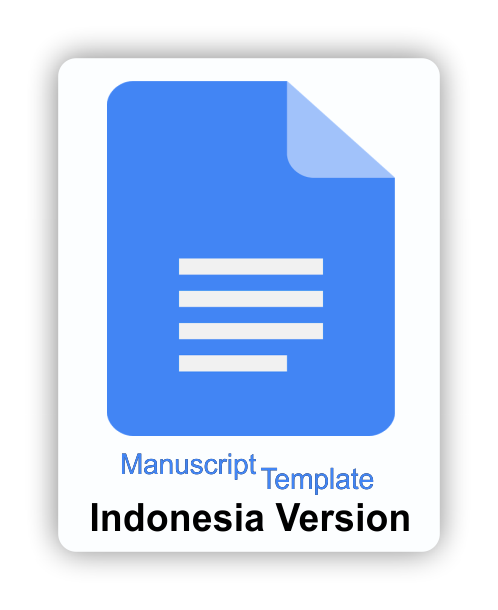Effect of Zoom fatigue on health and learning loss in students during the COVID-19 pandemic
Downloads
Covid-19 pandemic causes all face-to-face activities converted to distance or virtual meetings, including educational learning system. These days, the majority educational institutions in Indonesia still implement distance learning via video conference platforms. This primary research aims to discover how Zoom Fatigue affects health and causes learning loss in university students across Java. The methodologies used in this research are qualitative and quantitative. To specify this research, the population is set to students who study at several universities in Java, with 50 samples being Multimedia Nusantara University students and the other 50 sample are being students from other universities in Java. The techniques used to collect data are observation and questionnaire via Google Forms. After analyzing responses, the result shows that most students experience health issues such as eyesight issues, exhaustion, and saturation. Moreover, most students also go through some issues when it comes to the learning process, they experience a decrease of learning motivation and have trouble concentrating. Nevertheless, their academic records are stable and some even stated that their grades are increasing when compared to face-to-face learning systems, this fact shows that in-class learning is not the only source of information used by students to support their academic performance, but there are other sources of information such as internet where students can look up information from online article and scientific journals.
Alexandra, Y., & Choirisa, S. F. (2021). Understanding college students' e-loyalty to online practicum courses in hospitality programmes during COVID-19. Journal of Learning Development in Higher Education, 21. https://doi.org/10.47408/jldhe.vi21.627
Arikunto, S. (2010). Prosedur Penelitian.
Bailenson, J. N. (2021). Nonverbal overload: A theoretical argument for the causes of Zoom fatigue. Technology, Mind, and Behavior, 2(1), 1–13. https://doi.org/10.1037/tmb0000030
Chatib, M., & Said, A. (2012). Sekolah Anak-Anak Juara : Berbasis Kecerdasan Jamak dan Pendidikan Berkeadilan.
Cranford, S. (2020). Zoom Fatigue, Hyperfocus, and Entropy of Thought. Matter, 3(3), 587–589. https://doi.org/10.1016/j.matt.2020.08.004
Curry, D. (2021). Most Popular Apps (2021) - Business of Apps. https://www.businessofapps.com/data/most-popular-apps/
de Oliveira Kubrusly Sobral, J. B., Lima, D. L. F., Lima Rocha, H. A., de Brito, E. S., Duarte, L. H. G., Bento, L. B. B. B., & Kubrusly, M. (2022). Active methodologies association with online learning fatigue among medical students. BMC Medical Education, 22(1), 1–7. https://doi.org/10.1186/s12909-022-03143-x
Duffy, M. W. (2020). Fosslien & Duffy, 2020.
Fauville, G., Luo, M., Queiroz, A. C. M., Bailenson, J. N., & Hancock, J. (2021a). Nonverbal Mechanisms Predict Zoom Fatigue and Explain Why Women Experience Higher Levels than Men. SSRN Electronic Journal, 1–18. https://doi.org/10.2139/ssrn.3820035
Fauville, G., Luo, M., Queiroz, A. C. M., Bailenson, J. N., & Hancock, J. (2021b). Zoom Exhaustion & Fatigue Scale. SSRN Electronic Journal, May. https://doi.org/10.2139/ssrn.3786329
Hidayati, F. R., & Irwansyah, I. (2021). Avoiding Zoom Fatigue: The Uses and Gratifications on Social Media. CHANNEL: Jurnal Komunikasi, 9(1), 95. https://doi.org/10.12928/channel.v9i1.19510
Hidayatullah, S., Khouroh, U., Windhyastiti, I., Patalo, R. G., & Waris, A. (2020). Implementasi Model Kesuksesan Sistem Informasi DeLone And McLean Terhadap Sistem Pembelajaran Berbasis Aplikasi Zoom Di Saat Pandemi Covid-19. Jurnal Teknologi Dan Manajemen Informatika, 6(1), 44–52. https://doi.org/10.26905/jtmi.v6i1.4165
Ismayani, A. (2020). Metodologi Penelitian - Google Books. In Syiah Kuala University Press (pp. 65–67).
Moleong, L. (2007). Metodologi penelitian kualitatif edisi revisi. http://library.stik-ptik.ac.id/detail?id=7251&lokasi=lokal
Nadler, R. (2020). Understanding "Zoom fatigue": Theorizing spatial dynamics as third skins in computer-mediated communication. Computers and Composition, 58, 102613. https://doi.org/10.1016/j.compcom.2020.102613
Peper, E., Wilson, V., Martin, M., Rosegard, E., & Harvey, R. (2021). Avoid zoom fatigue, be present and learn. NeuroRegulation, 8(1), 47–56. https://doi.org/10.15540/NR.8.1.47
Peper, E., & Yang, A. (2021). Beyond Zoom Fatigue: Re-energize Yourself and Improve Learning. Academia Letters. https://doi.org/10.20935/al257
Pier, L., Hough, H. J., Christian, M., Bookman, N., Wilkenfeld, B., & Miller, R. (2021). COVID-19 and the Educational Equity Crisis | Policy Analysis for California Education. Policy Analysis for California Education (PACE). https://edpolicyinca.org/newsroom/covid-19-and-educational-equity-crisis
Pustikasai, A., & Fitriyanti, L. (2021). Stress dan Zoom Fatigue pada Mahasiswa Selama Pembelajaran Daring. Jurnal Ilmu K, 13(1), 25–37.
Rezki, M., Kholifah, D. N., Faisal, M., Priyono, P., & Suryadithia, R. (2020). Analisis Review Pengguna Google Meet dan Zoom Cloud Meeting Menggunakan Algoritma Naí¯ve Bayes. Jurnal Infortech, 2(2), 264–270. https://doi.org/10.31294/infortech.v2i2.9286
Romli, A.S.M. (2018, October 10). Jurnalistik Online. Nuansa Cendekia. https://www.google.co.id/books/edition/Jurnalistik_Online/Df7_DwAAQBAJ?hl=en&gbpv=0&kptab=overview
Rump, J., & Brandt, M. (2020). Zoom-Fatigue. Institut Fí¼r Beschäftigung Und Employability IBE, 1, 1–10.
Salim, J., Tandy, S., Arnindita, J. N., Wibisono, J. J., Haryanto, M. R., & Wibisono, M. G. (2022). Zoom fatigue and its risk factors in online learning during the COVID-19 pandemic. Medical Journal of Indonesia, 31(1), 1–7. https://doi.org/10.13181/mji.oa.225703
Shoshan, H. N., & Wehrt, W. (2022). Understanding "Zoom fatigue": A mixed-method approach. Applied Psychology, 71(3), 827–852. https://doi.org/10.1111/apps.12360
Sugiyono. (2008). Metode penelitian pendidikan - Google Books.
Sugiyono. (2016). Prosedure Penelitian. Journal of Chemical Information and Modeling, 53(9), 1689–1699.
Sugiyono. (2017). Metode Penelitian Kuantitatif - Google Scholar. (n.d.). Retrieved November 22, 2021, from https://scholar.google.co.id/scholar?q=Sugiyono.+(2017).+Metode+Penelitian+Kuantitatif,+Kualitatif,+dan+R%26D.+Alfabeta:+Bandung.&hl=en&as_sdt=0&as_vis=1&oi=scholart
Tjokrodinata, C., Rizky, C., Bangun, A., Liliani, H., Dewi, C., & Nuranindya, D. (2022). JURNAL KOMUNIKASI PROFESIONAL Video pembelajaran ramah disabilitas bagi komunitas e- sports ability Indonesia Laporan Pengabdian Kepada Masyarakat. 6(2), 169–180.
UNICEF. (2021). COVID-19: Schools for more than 168 million children globally have been completely closed for almost a full year. In Press Release (Issue March, pp. 1–8). https://www.unicef.org/india/press-releases/covid-19-schools-more-168-million-children-globally-have-been-completely-closed%0Ahttps://www.unicef.org/press-releases/schools-more-168-million-children-globally-have-been-completely-closed
Yikealo, D., Yemane, B., & Karvinen, I. (2018). The Level of Academic and Environmental Stress among College Students: A Case in the College of Education. Open Journal of Social Sciences, 06(11), 40–57. https://doi.org/10.4236/jss.2018.611004
The journal allows the author(s) to hold the copyright without restrictions. Finally, the journal allows the author(s) to retain publishing rights without restrictions
 | Jurnal Inovasi Teknologi Pendidikan by http://journal.uny.ac.id/index.php/jitp is licensed under a Creative Commons Attribution-ShareAlike 4.0 International License. |























